9 Fish for a 10-Liter Aquarium

Fish are an excellent way to decorate home spaces, as they usually have shapes and colors that attract a lot of attention. Usually, it’s necessary to have a large tank, and all the necessary accessories to take care of them. Fortunately, there are also 10-liter aquariums, also called nano tanks, that could keep certain fish well. Here’s our selection of fish for a 10-liter aquarium!
A 10-liter aquarium can’t hold many fish, but it’s a good option to venture into the world of aquarium keeping. Keep in mind that not all species are compatible with each other or have the same requirements, so you should be careful when choosing the members of the tank. Continue reading and get to know some fish that are suitable for this type of aquarium.
The minimum requirements for the aquarium
Before introducing you to the different types of fish, we should emphasize the minimum requirements of the tank. Remember that the water must maintain certain physicochemical parameters stable at all times. Otherwise, the specimens could have health problems and even die. The essential elements to maintain an aquarium are the following:
- Filter: This helps to process part of the waste that accumulates in the tanks.
- Pump: This allows the water to be circulated, to oxygenate and filter it.
- Heaters: Used to keep the water temperature constant. It isn’t necessary in all cases.
- Thermometer: Measures the water temperature.
- Substrate: This includes gravel and vegetation that you integrate in the tank. Some species require certain conditions in the substrate.
- Lighting: This allows the vegetation to grow properly and the fish to regulate their biological cycles. In the case of small aquariums, it isn’t usually so necessary to acquire special lighting, but it all depends on how much sunlight the tank receives per day.
The above requirements are only intended to keep the liquid in optimal conditions for longer, but you’ll still have to clean the tank and replace the water. Also, if you’re setting up an aquarium for the first time, remember to cycle the entire system so you can introduce your new pets.
Adding fish as soon as the tank is set up is a death sentence for them. Any environment requires an extended maturation period.
Suitable fish for a 10-liter aquarium
The 10-liter aquarium is too small to hold large fish, although this doesn’t mean that the suitable species aren’t attractive. Listed below are 9 types of fish that may be suitable for this type of tank.
1. Endler’s livebearer (Poecilia wingei)
These fish come from South America and have a wide variety of colors. Their size is between 2 and 4.5 centimeters long (nearly 1 inch to nearly 2 inches), so a maximum of 2-3 specimens can be kept in a 10-liter aquarium. It’s preferable to choose males over females, because they’re more colorful.
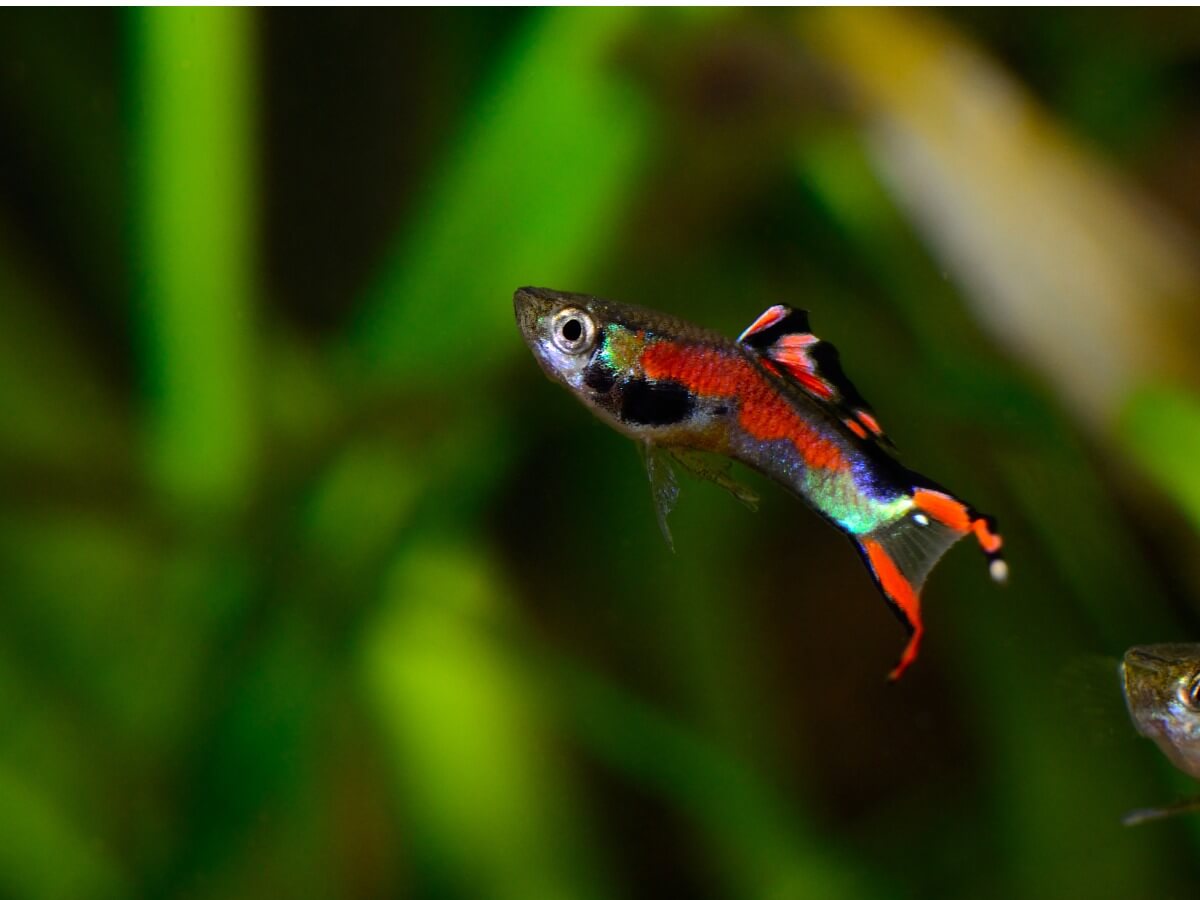
2. Cherry barb (Puntius titteya)
The cherry barb is one of the most colorful and beautiful small fish that can be kept in an aquarium. It reaches 5 centimeters (2 inches) in length and has a bright cherry-red coloration. It needs to have a lot of vegetation and floating plants in its habitat, which can be difficult due to the size of the tank. Due to its size, it’s only suitable to have 2 to 3 specimens in a small tank.
Barbel are schooling animals, so it’s best to purchase a large tank and more than 10 fish.
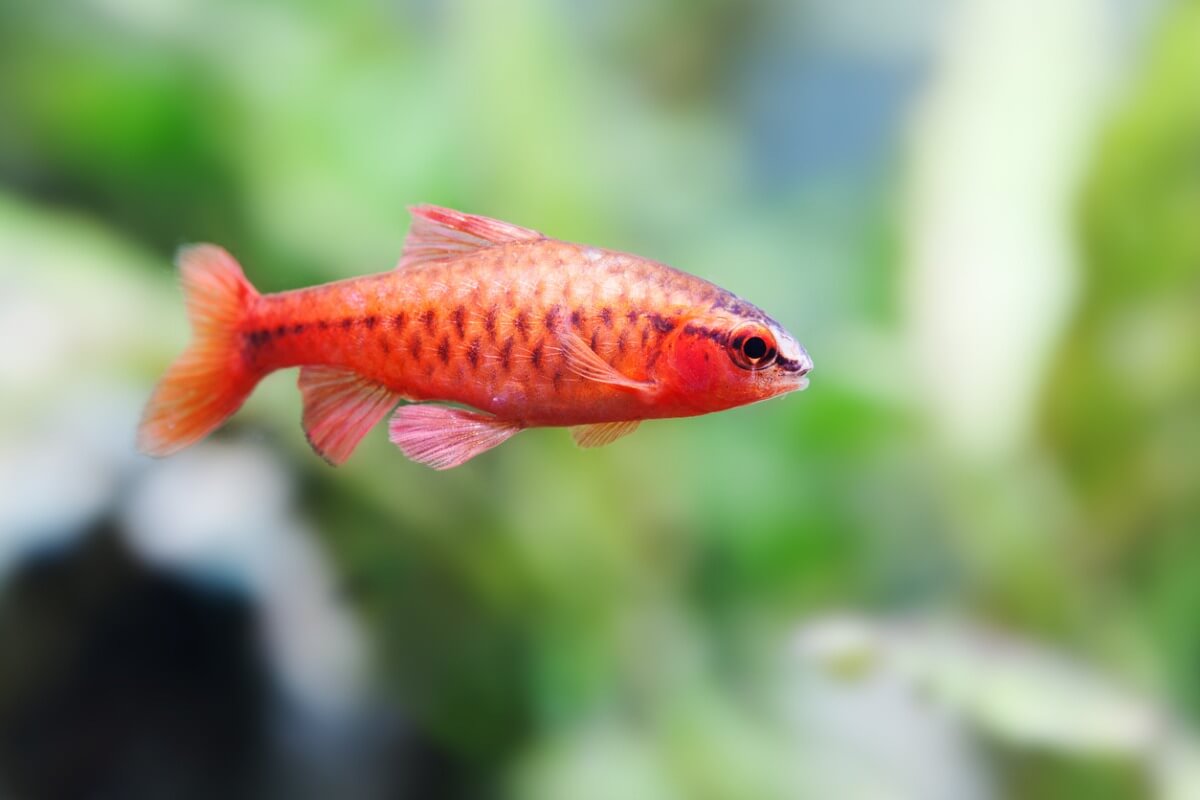
3. Threadfin rainbowfish (Iriatherina werneri)
This fish stands out for its curious morphology and lovely colors. It measures less than 5 centimeters (2 inches) in length, so it’s excellent for small aquariums. However, it needs precise water conditions. The temperature should be between 24 and 26 degrees Celsius, with an acid pH between 5.2 and 7. The 10-liter tank shouldn’t contain more than 2 specimens.
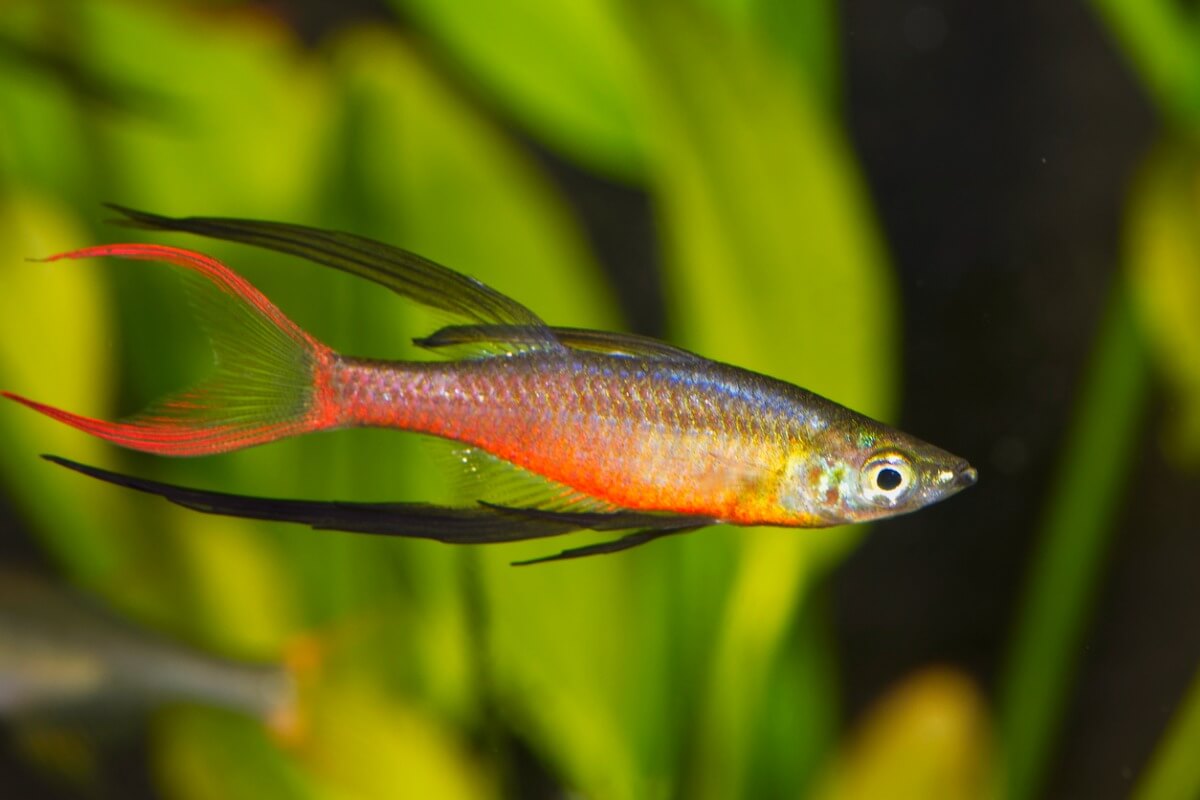
4. Siamese fighting fish (Betta splendens)
Fighting fish are well known for being hardy and suitable for small aquariums. They tend to be very aggressive even among their own kind, so it’s best to keep them alone. However, they exhibit beautiful coloration and diverse morphologies, making them popular with aquarists worldwide.
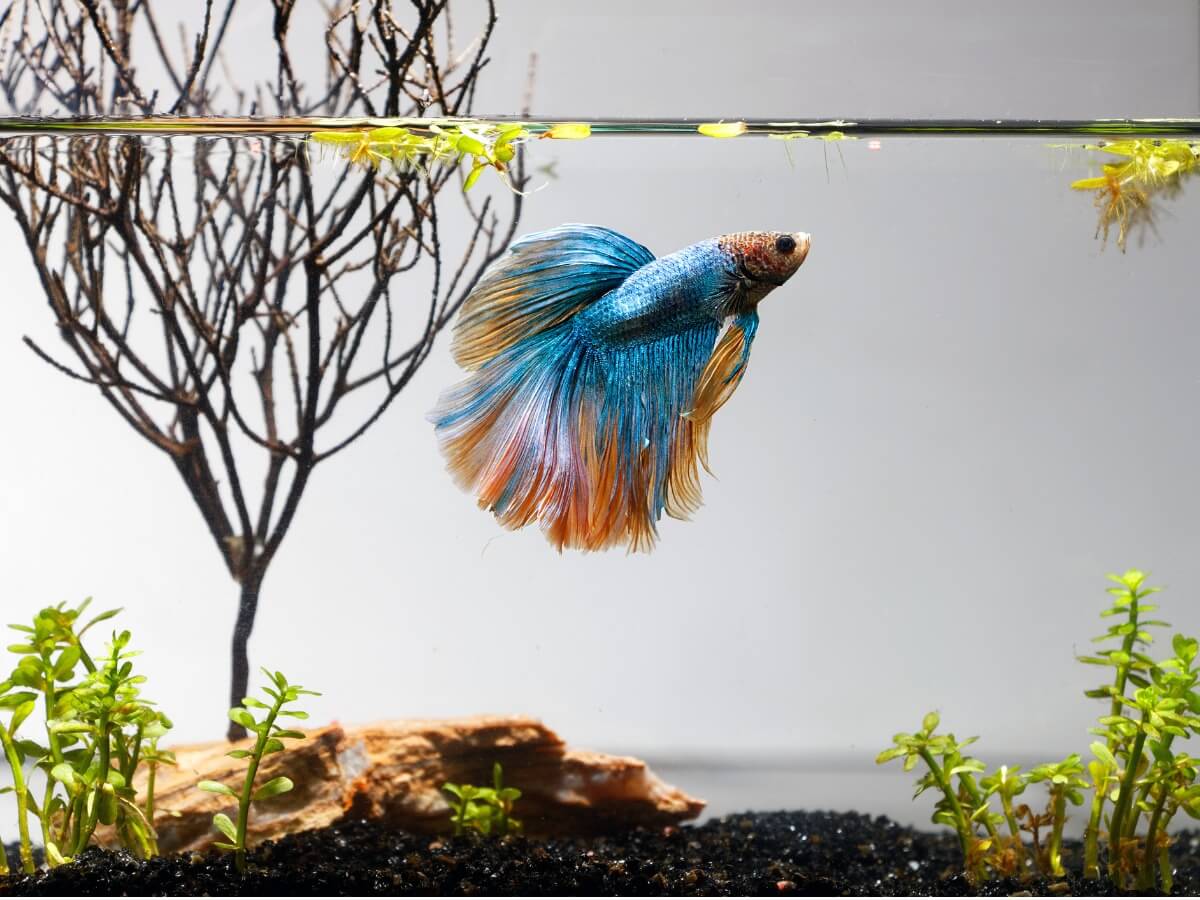
5. Zebrafish (Danio rerio)
The zebrafish is a fairly easy species to care for in captivity, as it copes very well with abnormal water conditions. It has a calm temperament and is easy to breed in captivity. However, because the tank in question is very small, only 3-4 specimens can be kept at most. They must be of the same sex to avoid mating.
Zebrafish are schooling animals as well. Therefore, a larger tank is recommended to hold at least 6 specimens.
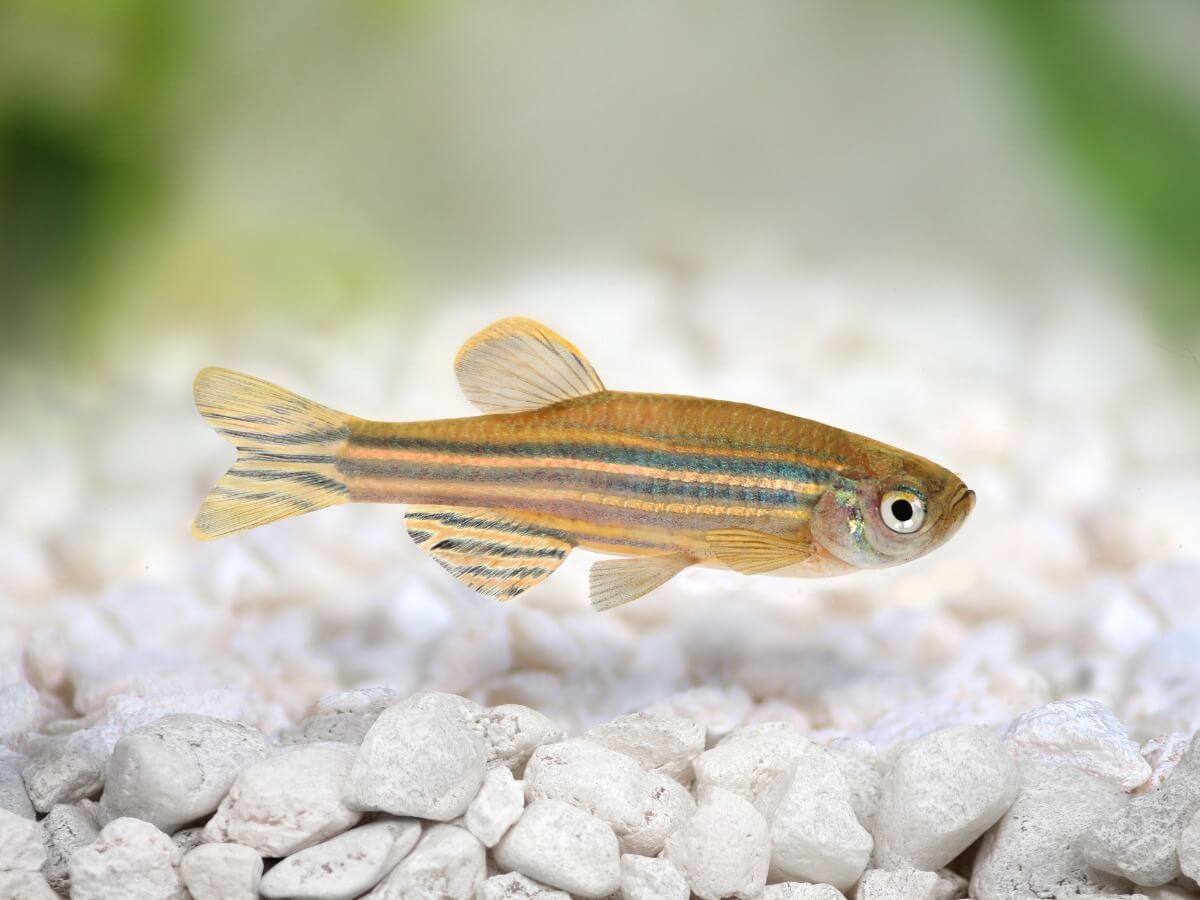
6. Galaxy rasbora (Danio margaritatus)
This fish barely reaches 1.5 centimeters in length (just over half an inch), but exhibits an eye-catching coloration with dark background and white dots. It’s quite gregarious and needs to be kept in a group. Thanks to its size, the 10-liter tank can hold 6 specimens without any problem.
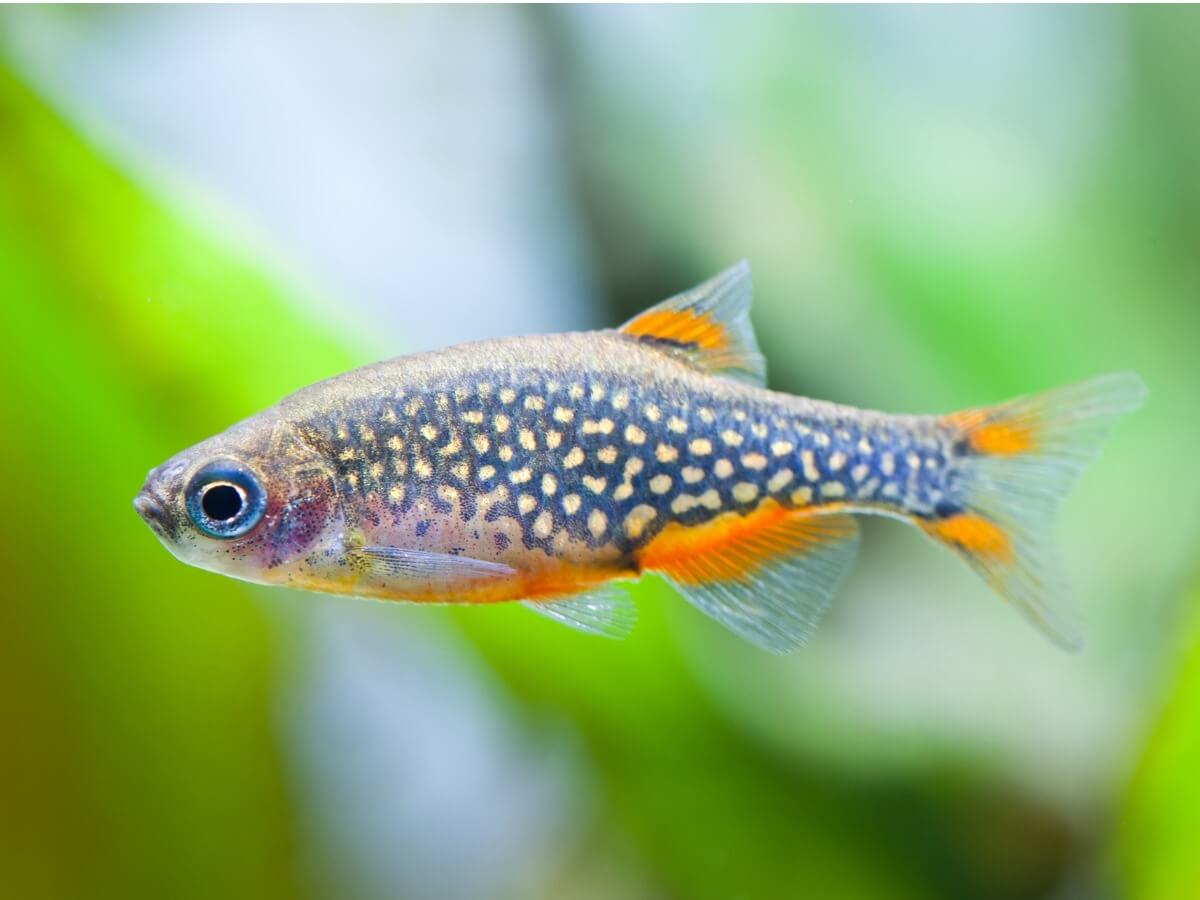
7. Pygmy corydoras (genus Corydora)
The pygmy corydoras fish is just over 3 centimeters (1.2 inches) long and is characterized by being very shy. Therefore, it needs to have enough hiding places in the tank so that it doesn’t suffer stress.
These specimens are kept near the bottom because of their tendency to burrow into the substrate, so it’s essential to have sand substrate. It is possible to introduce 3 or 4 individuals in the 10-liter aquarium.

8. Guppy (Poecilia reticulata)
This is perhaps the best-known group of fish because of their small size and bright colors. They measure between 3 and 4 centimeters in length (1.2 to 1.6 inches), although much depends on the variety purchased. Between 2 and 3 specimens can be introduced into the 10-liter tank, but it’s better to select only males to avoid overpopulation problems.
If you keep males and females together, they will breed in a matter of days.
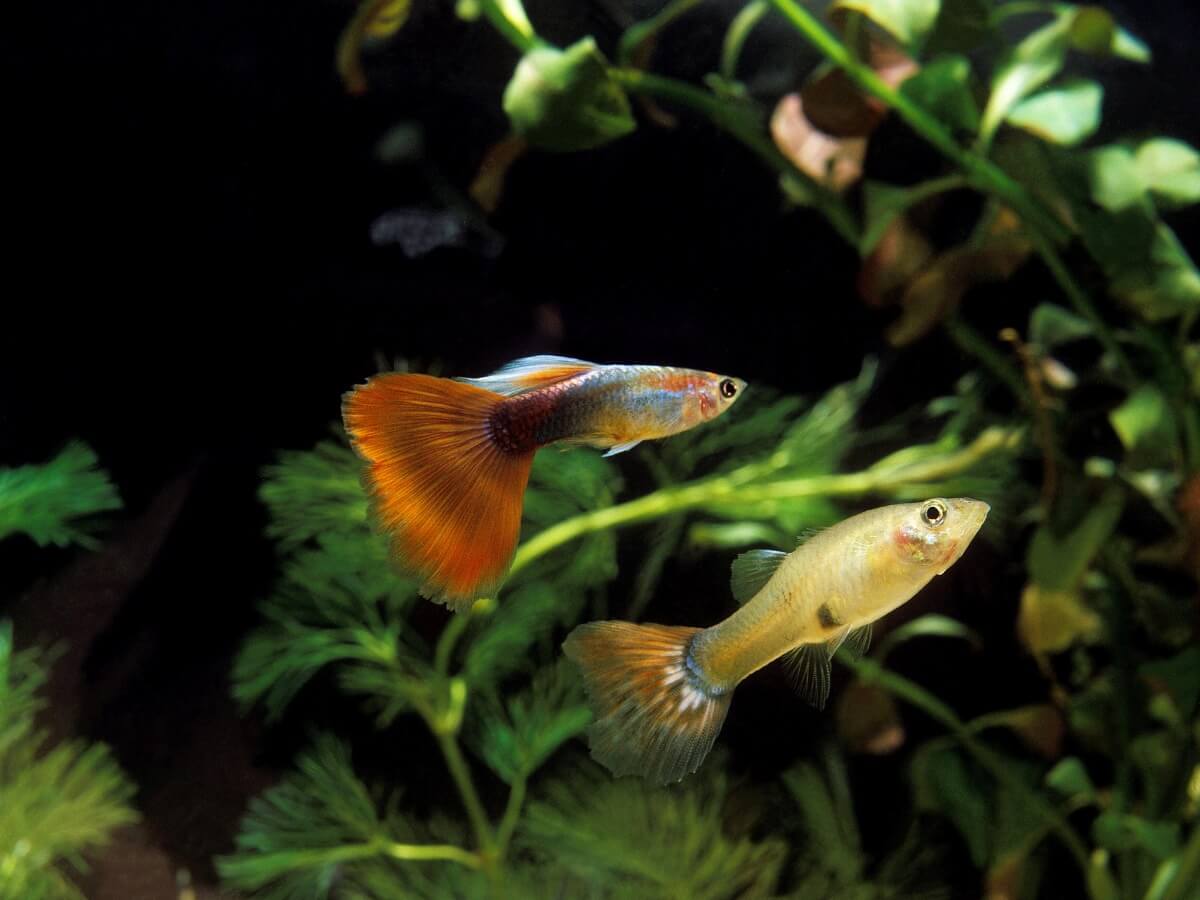
9. Dwarf gourami (Colisa lalia)
This beautiful fish is a close relative of the Siamese fighting fish, with the difference being that it’s less aggressive and calmer. They exhibit a flattened, colorful body that reaches 5 centimeters (2 inches) in length. They prefer aquariums with abundant vegetation, as this serves as a hiding place in any situation.
However, you can only keep one specimen in the 10-liter tank, because they’re somewhat territorial fish.
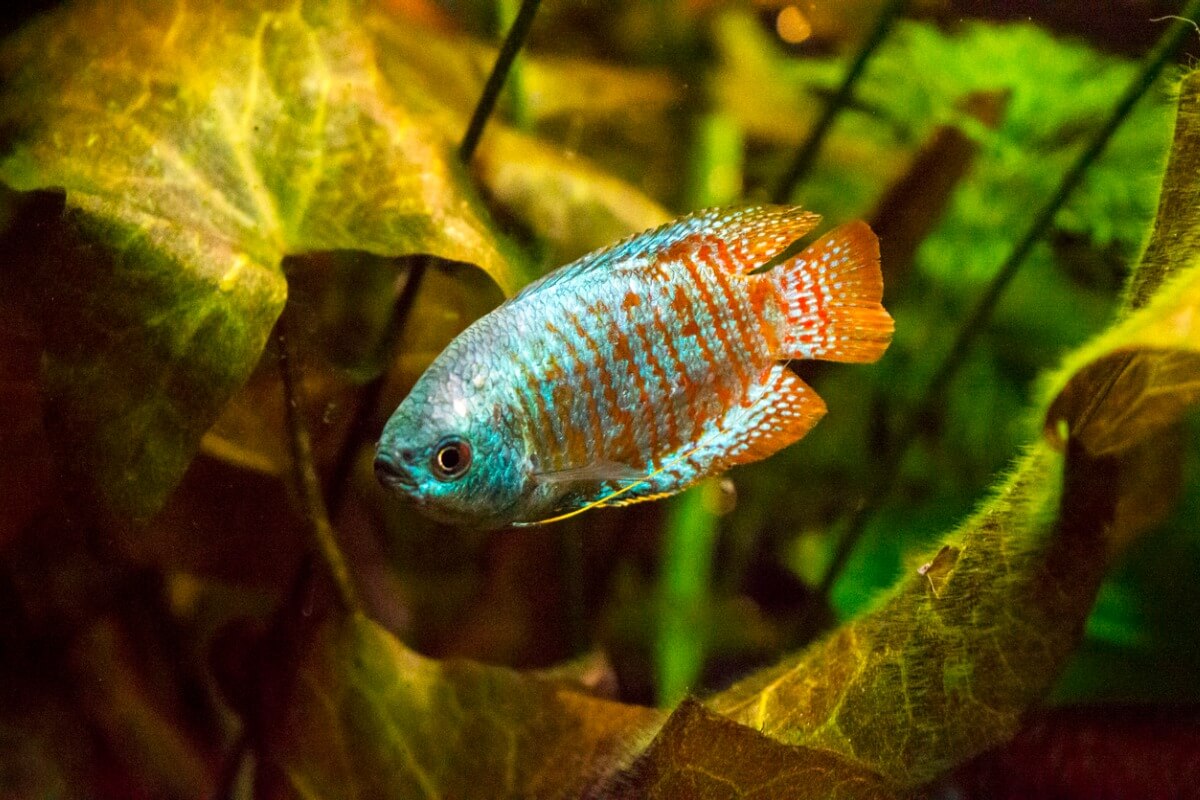
Beware of small aquariums
Although 10-liter aquariums are a good way to start in the world of aquarium keeping, you’ll need to try to change the tank for a larger one. This provides a better habitat for the fish, but also makes looking after them a little easier.
As mentioned above, maintaining stable water parameters is one of the biggest challenges for aquarists. Small tanks are more difficult to care for, as the volume is so small that any contaminant can quickly transform the liquid into an unsuitable one. A larger amount of water allows them to “withstand” these changes better and gives keepers more time to correct them.
Remember that fish require the same care as any other pet. Take your responsibility seriously and make sure that you’ll be able to offer them the best possible conditions. It may seem simple to maintain an aquarium, but it takes a lot of dedication and care.
All cited sources were thoroughly reviewed by our team to ensure their quality, reliability, currency, and validity. The bibliography of this article was considered reliable and of academic or scientific accuracy.
- Avdesh, A., Chen, M., Martin-Iverson, M. T., Mondal, A., Ong, D., Rainey-Smith, S., … & Martins, R. N. (2012). Regular care and maintenance of a zebrafish (Danio rerio) laboratory: an introduction. JoVE (Journal of Visualized Experiments), (69), e4196.
- Lynn, S. E., Egar, J. M., Walker, B. G., Sperry, T. S., & Ramenofsky, M. (2007). Fish on Prozac: a simple, noninvasive physiology laboratory investigating the mechanisms of aggressive behavior in Betta splendens. Advances in Physiology Education, 31(4), 358-363.
- Venugopal, K. M. (2015). Aqaurium Making and Maintenance. Recuperado el 6 de enero de 2022, disponible en: http://eprints.cmfri.org.in/10678/
- Langfield, J., & James, C. (2009). Fishy tales: experiences of the occupation of keeping fish as pets. British Journal of Occupational Therapy, 72(8), 349-356.
- Iwama, G. K. (2007). The welfare of fish. Diseases of Aquatic Organisms, 75(2), 155-158.
This text is provided for informational purposes only and does not replace consultation with a professional. If in doubt, consult your specialist.